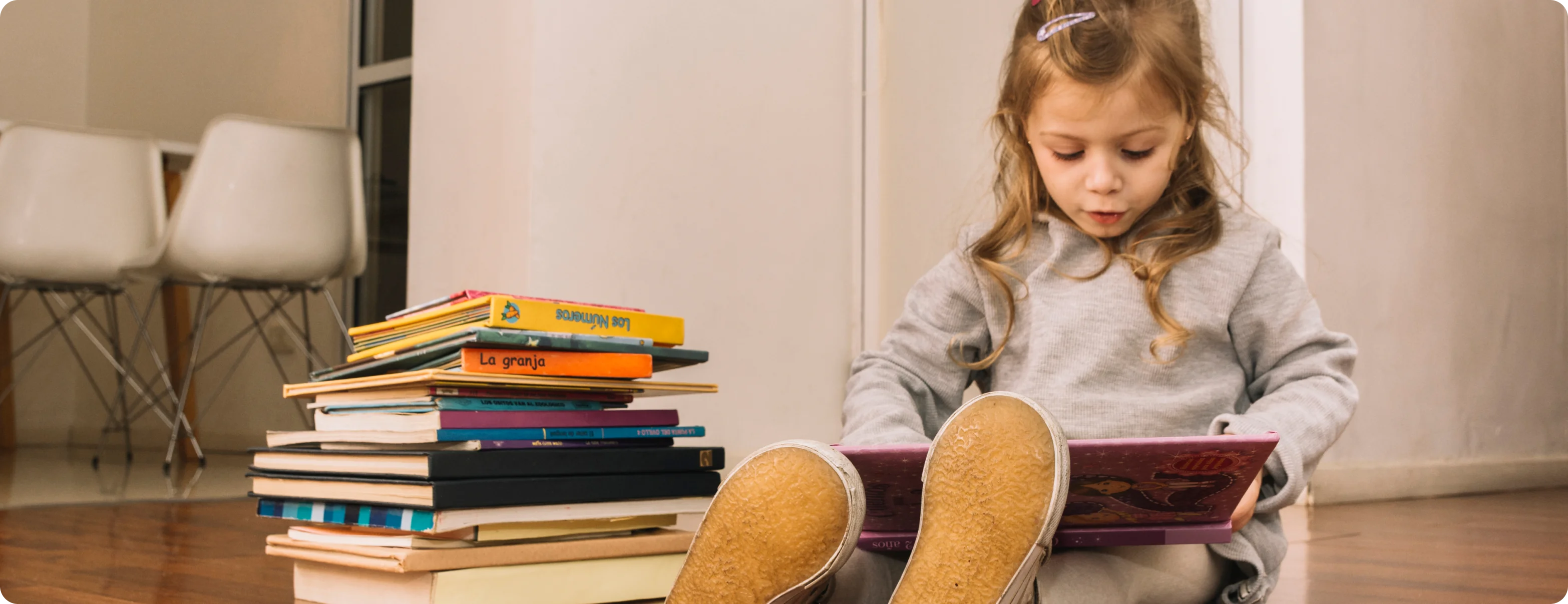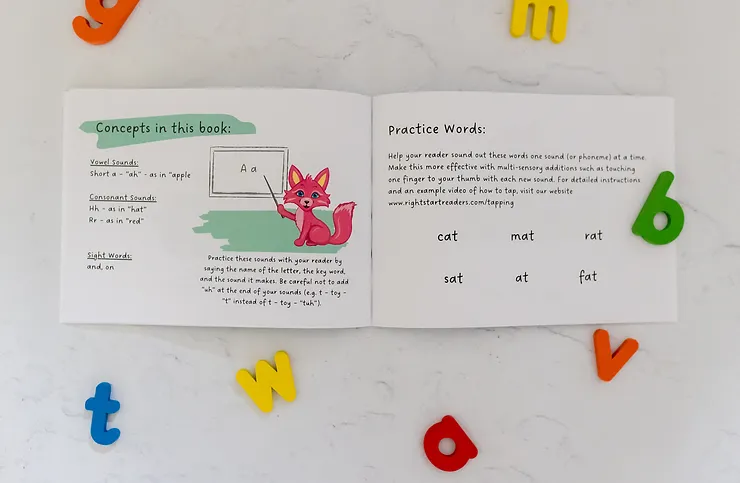Best Books for Teaching Your Child to Read at Home (Age-Wise Guide)

Stephanie Tsapakis
|
Published on Jan 18, 2023 · 4 min read


Stephanie Tsapakis
|
Published on Jan 18, 2023 · 4 min read

It was an exciting summer in our home, as our daughter prepared to start kindergarten. Being someone who lives and breathes all things "science of reading," I was really looking forward to helping teach her to read.
I made my way over to Barnes and Noble one afternoon excited to comb through the "early reader" section in hopes of finding some fun decodable books. I knew the selection would be severely limited by my high expectations, but I did not expect to not find anything at all that met them, but that turned out to be the case.
Before we jump into decodable readers, let's define what decodable means. When a word is "decodable," it means that the word follows phonetic rules that are able to be known. When a word can be decoded, the reader is able to break the word into its syllables and know how to pronounce it.
It is believed that anywhere from 84% to 96% of words follow these predictable, knowable rules.^ In simple terms, the reader can sound out this high percentage of words -- but this is only true if they know the rules.
Children need to be taught these rules. When they are not taught these rules - and when they are not introduced in a structured way - we begin to see a pattern of guessing and memorizing that does not serve them whatsoever in the long run.
When a child is learning to read, they begin with the most basic syllable type when all vowels only make their short sound. Decodable book series follow a logical order that start with these types of words, sometimes called CVC words (consonant-vowel-consonant like in the word cat), and build from there.
Once students master the skills required to read these types of words, they are introduced to additional concepts and rules.
As new rules are introduced, words that follow those rules are added to their decodable readers. The words in these books follow the principals that are being taught to students, and purposefully do not include concepts which have not yet been taught. Thus, making the books/stories decodable (or readable for students that have learned the rules included in the books).
This implies that decodable books will come in a variety of levels, stages, or sets that are meant to address and practice the specific phonics concepts that students learn in small chunks. It's important to remember that what is decodable is going to vary from child to child depending upon what they've already been explicitly taught.
If you walk into Barnes and Noble, much like I did that day, you will see a large selection of books in the "early reader" section labeled with 'My First Reader' or 'Level 1' or something along those lines. Unfortunately, you cannot take the publisher's word on this.
It is very common for the books marketed as "first readers" to be totally inappropriate for teaching children to read.
For our very early readers, here are some quick questions to ask yourself in order to assess whether a book is decodable or not:
Does the title have words that have two vowels next to each other?
If yes, it is not decodable.
When flipping through the pages, do I see words that have two vowels next to each other or words with multiple syllables?
If yes, it is not decodable.
When flipping through the pages, do I see words with suffixes like "stuffed," "jumping," or "quickly"?
If yes, it is not decodable.
When flipping through the pages, do I see words where vowels say their name like it the word "cake," "grow," or "so?"
Basically, you are looking for books that only use CVC words in their most simple books. Consonant-vowel-consonant....that's it. Example CVC words are: cat, big, run, hop, cap, hen.
When you're looking at a series or set of books, there are a variety of ways to introduce new concepts. A few logical progressions would be to see digraphs and blends introduced. A digraph is two letters that make one sound like in the words ship and pick, and blends are formed when two consonants touch each other like in "slip" and "pinch."
Therefore, once you have found a decodable book series, the next step is to assess the what is being introduced next. You can ask yourself:
Don't underestimate the amount of time your child needs to practice a new concept before moving on. What may seem "boring" or overly repetitive to you is actually exactly what your budding reader needs.
It is a lot to think about! And honestly, I was unable to find anything on the market that met all of these criteria. That is when I decided to write my own decodable books - Right Start Readers.
This series is truly decodable, has beautiful illustrations, and even guides parents on how to help teach their child. If you are looking for a trusted resource to help teach your child how to read - you've found it!
The series is available on Amazon, and also at www.rightstartreaders.com/books
Happy Reading!

^Hanna, Paul R. “Phoneme-grapheme correspondences as cues to spelling improvement.” (1966).
Stay updated with our latest blog posts.
Cart